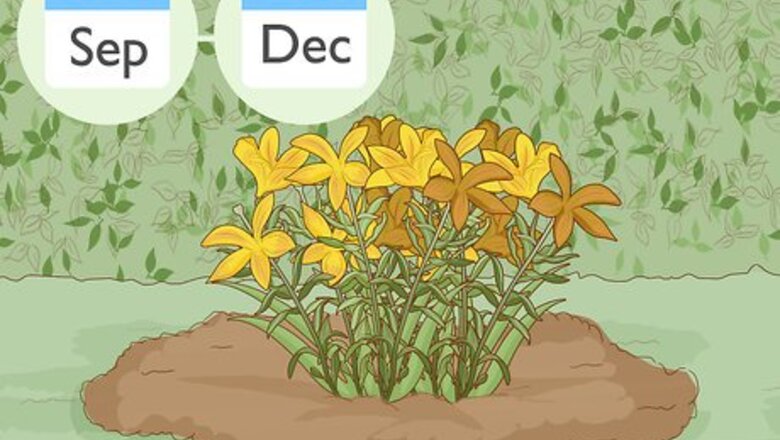
views
Digging up and Dividing the Lilies
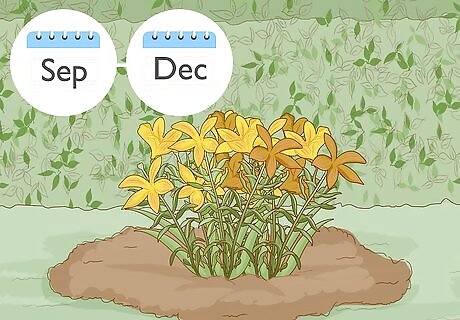
Divide your lilies in the fall every 3-4 years to prevent overcrowding. After 3-4 years, your lilies will have developed a large bulb structure underground and can start to get crowded in your garden. Wait until the fall when the stems and leaves turn from yellow to brown before you dig up the bulbs. That way, you won’t harm any plants while they’re blooming. You can also try to transplant in the early spring, but your lilies may not bloom as well or produce as many flowers. Avoid digging up the bulbs on a warm, sunny day since you could damage the bulbs.
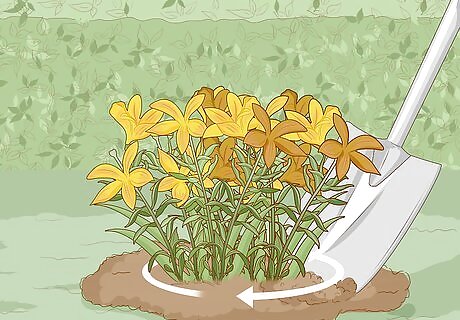
Loosen the soil around your lilies in a circle to pry them up. Start your shovel about 3–4 in (7.6–10.2 cm) from the base of your lilies and drive it straight down into the ground. Once you get the tip of your shovel 6 inches (15 cm) down, pull the handle toward you to pry up the bulbs. If your lilies don’t pry out of the ground right away, then pull your shovel out of the ground and go on the opposite side of your lilies and push your shovel in again. Continue loosening the soil around the lilies in a circle until you’re able to ease them out of the soil. Don’t start your shovel too close to the lilies since you could damage the bulbs underground. You can also use a gardening fork if you don’t have a shovel.

Pull apart the bulbs by hand and organize them by size. Put on a pair of gardening gloves to protect your skin from any possible irritation. Grab the bulb structure of the lilies and brush off as much soil as you can to find where the bulbs are stuck together. Gently pull the bulbs apart to separate them from one another. Put the bulbs into piles based on their sizes since larger bulbs will bloom sooner than small ones. The largest lily bulbs that you dig up will bloom during the next season. Medium-sized bulbs will take about 2 growing seasons before they produce any blooms. The smallest bulbs will take 3-4 seasons before they make flowers.Tip: If you can’t pull the bulbs apart by hand, then use a small gardening knife to cut them apart. Wash the blade after each bulb so you don’t spread any infections or diseases.
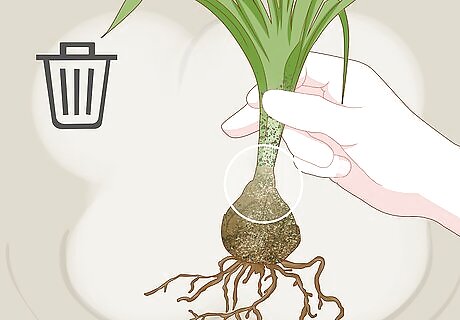
Throw away any bulbs that have disease or rot on them. Inspect the bulbs as you dig them up for any soft spots or black mildew growing on them. Clean off as much soil as you can so you can see any diseases on the bulb. Toss the bad bulbs in your trash so you only plant healthy flowers again. Don’t put diseased bulbs in a compost bin since you could spread the disease to other plants in your compost bin.
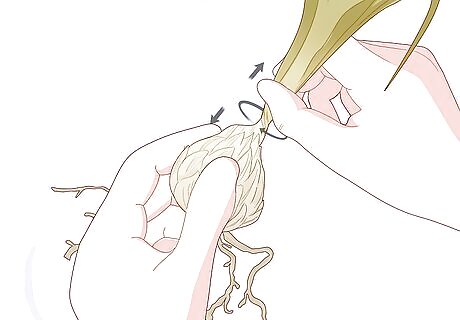
Twist the stem until it separates from the bulb. Grab the base of the stem at the top of the bulb with your dominant hand. Rotate the bulb either clockwise or counterclockwise with your nondominant hand until the stem breaks lose off of the bulb. Continue removing the rest of the dead stems and leaves from the healthy bulbs. If you’re dividing daylilies, then cut the stems so they’re 6–8 inches (15–20 cm) long. Remove the leaves and other foliage from the stems.
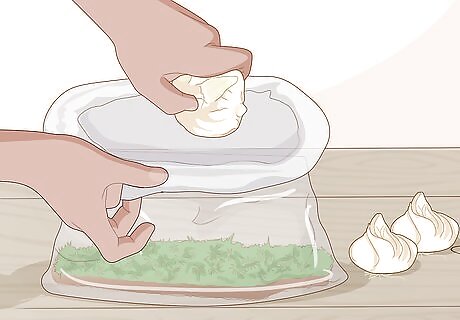
Put bulbs you can’t plant right away in a plastic bag with sphagnum moss. Plant your bulbs as soon as you possibly can so they stay healthy and don’t dry out. However, if you’re unable to plant the bulbs right away, fill a plastic bag with moist sphagnum moss and place the bulbs inside. Keep the bag in your refrigerator until you can plant them again. You can keep the bulbs in your fridge for up to 8 weeks if you need to. Don’t keep the lilies in a drawer with other fruits and vegetables since they could release gases that could affect future blooms.
Replanting Your Bulbs in the Ground
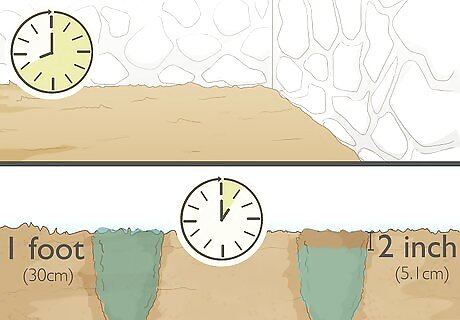
Find a spot that has full sun and well-draining soil to plant the bulbs. Search for a place in your yard that gets sun for about 8-10 hours per day so your lilies can grow to their full potential. Check the drainage of your soil by digging a hole that’s 1 foot (30 cm) wide and 1 foot (30 cm) deep and filling it with water. If the water level goes down by at least 2 inches (5.1 cm) per hour, then it’s a good place for your lilies. You can also plant your lilies in the same place if you don’t want to find new locations for your bulbs.
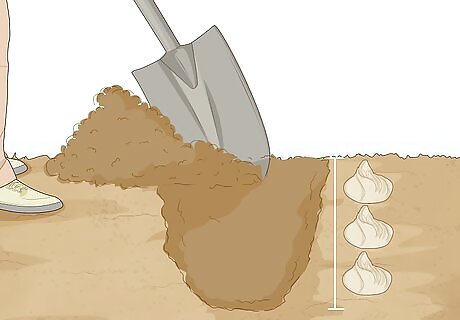
Dig a hole that’s 3 times deeper than the height of the bulb. Use your shovel to dig a hole that’s at least 3 times deeper than the bulb height and 2 times wider than its diameter. That way, your lily will have room to grow and it will be deep enough for it to stay safe through the winter. If you’re transplanting daylilies, then dig your hole so it’s 3 inches (7.6 cm) deeper than the height of the bulb.
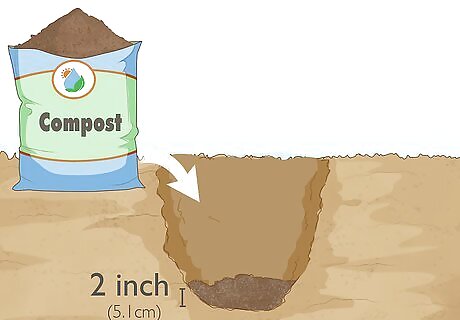
Amend the soil with 2 in (5.1 cm) of compost. Spread the compost along the bottom of the hole until you’ve made a 2 in (5.1 cm) layer. Make sure the top of the compost is level to provide a firm base for the bulbs. The compost will help provide nutrients to the bulb to reinforce its growth so it doesn’t die before the next season. For example, you can use organic garden compost or a perlite mixture. You can either make your own compost or you can buy a compost mix from your local gardening store.

Place 3-5 bulbs in the hole ⁄2 in (1.3 cm) apart with the pointed ends up. Set the lily bulbs you’re planting in the middle of the hole so the pointed ends that had stems growing from them face the top. Press the bulbs firmly into the compost to pack the roots into it so it can grow strong and healthy. Leave at least ⁄2 inch (1.3 cm) between the bulbs so they have room to grow. If you’re planting daylilies, then make sure the pointed end with the shoots is only 1 inch (2.5 cm) below the surface of the ground. Plant all the bulbs of the same size in a similar area rather than mixing them together. Otherwise, your lilies won’t look as full.Tip: Keep your clusters of bulbs spaced 8–18 inches (20–46 cm) apart so they don’t overcrowd and have room to expand.

Backfill the hole with soil and mark its location. Cover the top of the bulbs with the leftover soil from your hole and continue filling until it’s level with the rest of the ground. Lightly press down on top of the soil to compact it so it’s tight around the bulbs. Put a small post or garden marker in the ground so you don’t forget where you buried your bulbs. You can also mix 1 part compost with every 4 parts of soil to make it more nutritious for your plants.
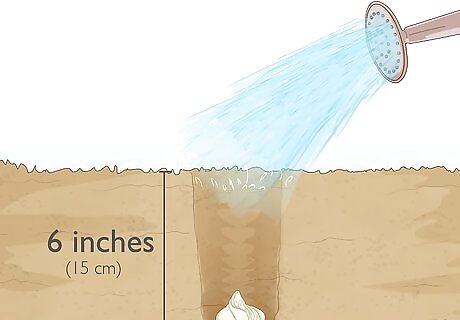
Water the soil as soon as you plant them. Fill a watering can or use a hose with a showerhead attachment to water the soil where you just buried the bulbs. Continue watering the area until the soil 6 inches (15 cm) below the surface is wet to ensure your bulbs get water. Keep your soil moist through winter if you don’t get any snow cover.
Transplanting Lilies in Containers
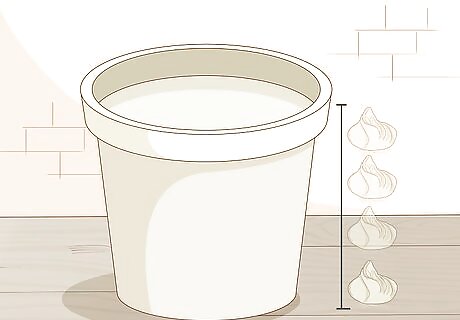
Get a pot that’s at least 3-4 times the height of the largest bulb. Measure the size of your largest bulb so you can find a pot that’s large enough for it. Look for a pot that’s at least 2-3 times wider than the bulb’s diameter and that’s 3-4 times the height to ensure you’re planting the bulbs low enough. Make sure the pot has drainage holes so water doesn’t sit in the soil for too long or cause your bulbs to rot. Plan to get 1 pot for every 3-5 bulbs you have.
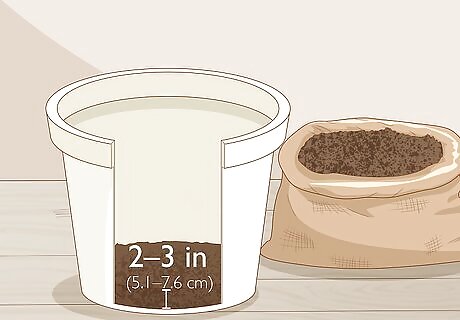
Fill the bottom of the pot with 2–3 in (5.1–7.6 cm) of compost. Put a piece of broken pot over the drainage holes so the compost doesn’t fall out. Find a good compost mix from your local gardening store or use your own. Cover the bottom 2–3 inches (5.1–7.6 cm) of the pot with the mixture and pack it down lightly so you have a level surface. Don’t pack the compost too tightly or else the roots may have trouble growing once your lilies are in season. You can use things like organic garden compost, food scraps, or a packaged perlite mixture.
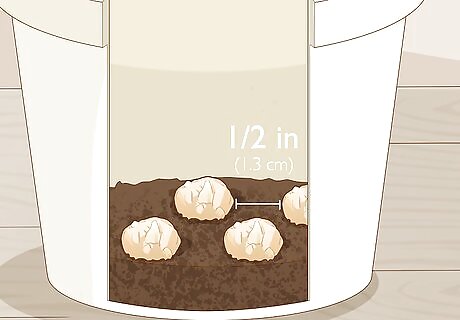
Place 3-5 bulbs ⁄2 in (1.3 cm) apart in the compost so the pointed ends face up. Set the bulbs about 1 inch (2.5 cm) from the edge of the pot in a circular pattern. Leave about ⁄2 inch (1.3 cm) between each bulb so they have time to grow without getting too crowded. Make sure the pointed ends of the bulbs are face up or else your plant won’t grow.Tip: Use the largest bulbs in your pots if you want blooms during the next growing season. Otherwise, it will take a few years to see any flowers.
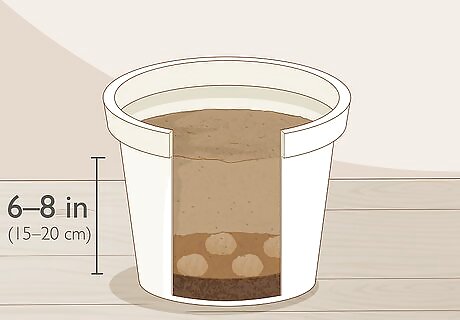
Cover the top of the bulbs with 6–8 in (15–20 cm) of soil. Use a regular potting soil mix or a compost mixture for filling the rest of your pot. Continue filling the pot with another 6–8 inches (15–20 cm) of the soil and level it off near the top. Pack the dirt in lightly so it compacts around the bulbs and promotes healthy growth. Don’t back the dirt too tightly or else the flowers will have trouble growing and blooming.
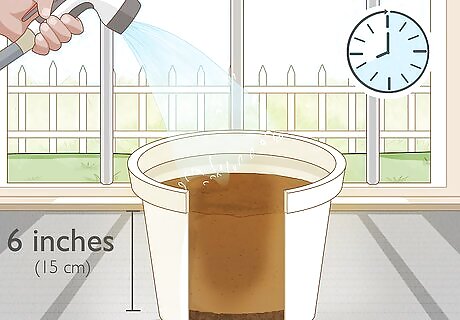
Water the bulbs and keep them in an area with 8-10 hours of sun per day. Use a watering can or a hose to dampen the soil. Continue watering your bulbs until the soil is wet 6 inches (15 cm) below the surface. Set the bulbs in an area that gets 8-10 hours of sunlight daily so the bulbs have time to establish themselves before the growing season. You can keep the pot outside if there isn’t an area inside your home that gets full sun. Keep the soil in the pot moist throughout the winter so your bulbs get water.



















Comments
0 comment